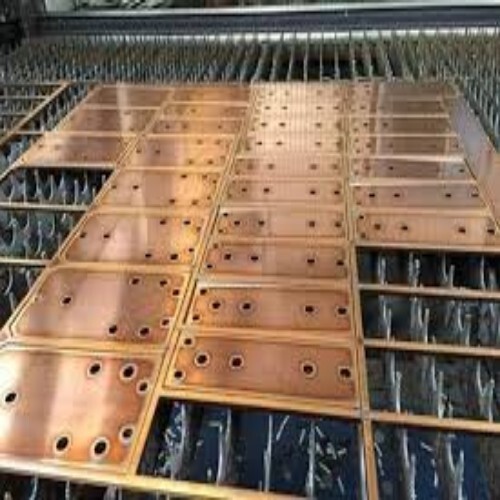
Laser Cutting in Gujarat
Product Details:
Laser Cutting in Gujarat Price And Quantity
- 4500 INR/Unit
- 1 Unit
- 5000.00 - 50000.00 INR/Unit
Laser Cutting in Gujarat Trade Information
- Vadodara
- Cash Advance (CA), Cash in Advance (CID), Cheque
- 100 Unit Per Week
- 5 Days
- Standard
- North America, South America, Central America, Eastern Europe, Africa, Middle East, Asia, Western Europe, Australia
- South India, Assam, Punjab, Haryana, Sikkim, Kerala, Maharashtra, Central India, Daman and Diu, Odisha, Gujarat, Rajasthan, Nagaland, Jharkhand, Bihar, Karnataka, North India, Dadra and Nagar Haveli, Arunachal Pradesh, East India, Mizoram, Meghalaya, Delhi, West India, Madhya Pradesh, Andaman and Nicobar Islands, Chhattisgarh, Jammu and Kashmir, Manipur, Telangana, Andhra Pradesh, All India, Lakshadweep, Chandigarh, Himachal Pradesh, Tamil Nadu, Goa
Product Description
Copper laser cutting involves using a high-powered laser to cut copper sheets or other forms of copper material. Here are the key aspects of this process:
-
Laser Type: Typically, a fiber laser or a CO2 laser with a high power output is used for cutting copper. Fiber lasers are more commonly preferred due to their efficiency with metals.
-
Material Preparation: Copper sheets or plates are prepared for cutting. They need to be clean and free of contaminants to ensure precision.
-
Laser Settings: The settings on the laser cutting machine, such as power, speed, and focus, are adjusted specifically for copper. Copper has high thermal conductivity, so precise control is required.
-
Assist Gas: An assist gas, often oxygen or nitrogen, is used to help blow away the molten copper and improve cutting quality. Oxygen can enhance the cutting process, while nitrogen is used for a cleaner edge without oxidation.
-
Cooling: The cutting process generates significant heat, so cooling systems might be employed to prevent overheating and warping of the copper.
-
Edge Quality: Laser cutting produces clean and precise edges with minimal need for post-processing. However, edge quality can vary based on settings and the type of copper used.
-
Safety: Adequate ventilation and protective gear are important because the cutting process can produce fumes and high-intensity light.
-
Applications: Copper laser cutting is used in various industries, including electronics, automotive, and decorative arts, for creating intricate parts, components, and designs.

Price:
- 50
- 100
- 200
- 250
- 500
- 1000+



 English
English Spanish
Spanish French
French German
German Italian
Italian Chinese (Simplified)
Chinese (Simplified) Japanese
Japanese Korean
Korean Arabic
Arabic Portuguese
Portuguese
